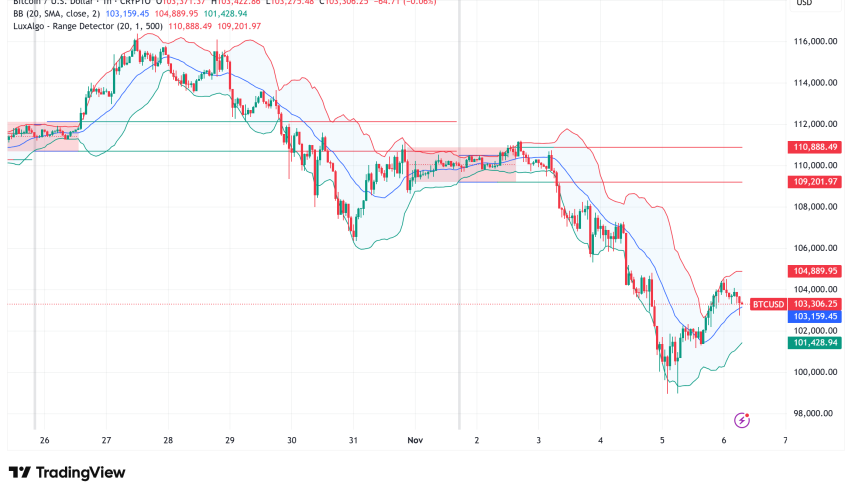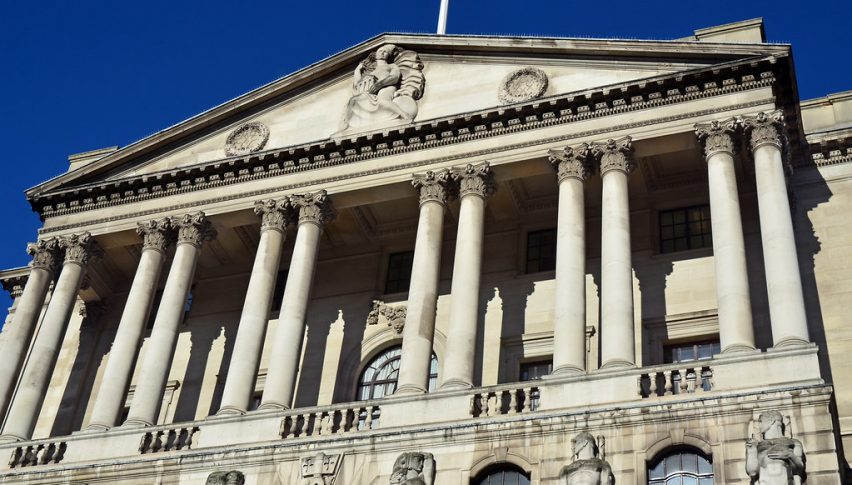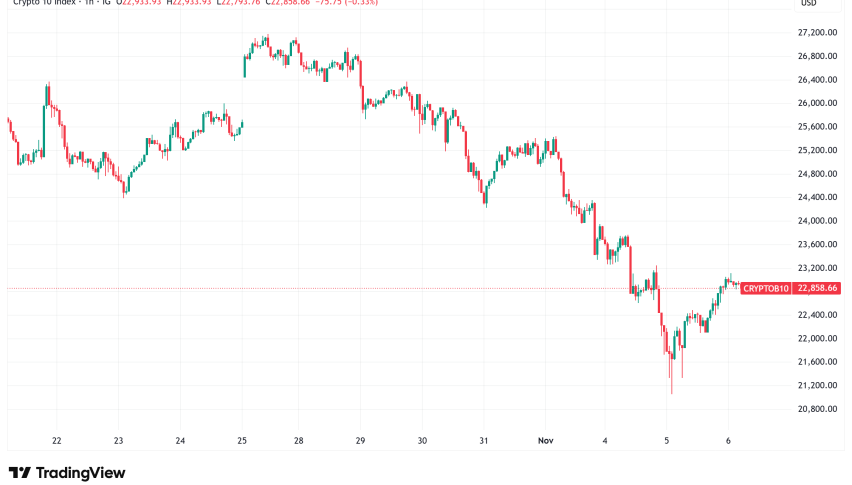Forex Signals Brief March 21: FED Done, the SNB and BOE Coming Up
The FED send the USD more than 1 cent lower, so the risk for the CHF and GBP are also to the downside after the SNB and BOE today

Yesterday we had the UK CPI Inflation report released in the morning, which was expected to show some decent decline. The numbers were even softer, however, the GBP was not too deterred by the CPI report, as we were heading into the FED meeting later in the evening, while today we have the Bank of England meeting, which comes after the SNB.
The market’s cautious sentiment leading up to the FOMC meeting shifted after the decision, resulting in a softening of the US dollar. This movement aligned with expectations as the FOMC’s decision didn’t signal a shift to a 50 basis point increase from the current 75 basis points this year, as many had anticipated.
The initial weakness in the dollar can be attributed to several factors. Firstly, the FOMC’s projections for 2025 and 2026 were adjusted to reflect fewer rate cuts, while the core inflation forecast saw a slight uptick. Additionally, Federal Reserve Chairman Jerome Powell’s dovish stance further weakened the dollar. Powell’s remarks, which included stating that job losses weren’t necessary to prompt rate cuts, contributed to the dovish sentiment.
Though Powell refrained from providing specific timing guidance, he acknowledged that the January Consumer Price Index (CPI) might have been distorted. The market reacted positively to Powell’s remarks, with US stocks reaching record highs and the dollar depreciating. Furthermore, market expectations shifted, with an increase in front-end rates as investors priced in approximately 7 basis points more in rises for the year. The likelihood of a rate reduction by June surged to 84%. These market movements reflect ongoing expectations of a dovish stance from the Federal Reserve.
Today’s Market Expectations
Today would be all about the Flash PMIs day for many major economies, but the market will likely focus on the SNB and the BOE meetings, since there’s not much expected to change in the services and manufacturing activity anyway, as shown below:
- Eurozone Manufacturing PMI 47.0 vs. 46.5 prior.
- Eurozone Services PMI 50.5 vs. 50.2 prior.
- UK Manufacturing PMI 47.8 vs. 47.5 prior.
- UK Services PMI 54.0 vs. 53.8 prior.
- US Manufacturing PMI 51.7 vs. 52.2 prior.
- US Services PMI 52.0 vs. 52.3 prior.
The likelihood of the Swiss National Bank (SNB) decreasing interest rates by 25 basis points at its March meeting stands at 50%. This expectation has strengthened due to a further decline in the latest inflation statistics. Both the Headline CPI Y/Y, which fell to 1.2%, and the Core CPI Y/Y, which dropped to 1.1%, are significantly below the SNB’s predictions and comfortably within the 0-2% inflation target range. Should the SNB choose not to cut rates at the upcoming meeting, it becomes highly probable that they will signal a move for June, potentially involving a more significant rate reduction of 50 basis points. This strategy would align with the central bank’s objectives to address inflation concerns and stimulate economic activity.
The Bank of England (BoE) is expected to maintain its interest rates at 5.25% during its upcoming meeting. Among the Monetary Policy Committee (MPC) members, Mann and Haskel are anticipated to vote for an increase in interest rates, while Dhingra is likely to vote for a decrease. The remaining members are expected to vote to keep rates unchanged. Leading up to the meeting, economic data has been largely uneventful, with no significant surprises. The MPC will also receive the latest UK inflation figures on the first day of the meeting, which might influence the voting split but are not expected to cause significant changes in other aspects. Market sentiment indicates that the first rate cut is fully priced in for August, suggesting that investors have already factored in expectations of a potential future decrease in interest rates by that time, but we might get a dovish surprise.
The US Jobless Claims report retains its significance as one of the most crucial releases each week, offering a timely gauge of the labor market’s health. Initial Claims have been hovering around cyclical lows, indicating ongoing stability, while Continuing Claims remain relatively high, reflecting persistent challenges in the labor market. As of the current moment, there is no consensus on the upcoming claims statistics. However, the previous report surpassed expectations across the board, with substantial positive revisions to the Continuing Claims figures. This unexpected strength prompted a notable hawkish response in the markets.
Yesterday the price action was slow again in most assets as traders remain on the sidelines with the approach of the FOMC meeting later in the evening. But the USD dived after the meeting while there was a surge in everything else, so we ended up with three closed trading signals yesterday.
Gold Surges Above $2,200
GOLD experienced a decline last week following a recent record high earlier in the month. However, this week, it has stabilized within a certain range, leading the XAU/USD pair to settle around $2,152, forming a support zone. Despite several buying signals emerging against this support level, the price has consistently returned to it, suggesting the potential for a break below $2,150 this week. Indeed, the XAU/USD pair dipped below this support level recently. Nevertheless, the price stalled above $2,150 and yesterday we saw another surge after the FED meeting which took XAU above $2,200.
XAU/USD – 240 minute chart
GBP/USD Breaks Below the 100 SMA
The GBP/USD pair had been declining since early last week, shedding over 200 pips in the process. However, during this downturn, the 50-day Simple Moving Average (SMA) acted as a support level on the daily chart. Additionally, Tuesday’s candlestick closed as a hammer, which is typically interpreted as a bullish signal following a decline. Yesterday, the pair experienced mostly stagnant price action, but it surged approximately 1 cent higher to the 1.2780s range following dovish comments from Federal Reserve Chairman Jerome Powell. Powell’s remarks, which were perceived as dovish for the USD, likely contributed to the upward movement in the GBP/USD pair.
GBP/USD – 240 minute chart
Cryptocurrency Update
The Retreat in Bitcoin Continues
Last week, Bitcoin (BTC) displayed notable volatility, reaching a new all-time high above $73,000 early in the week. Concurrently, Ethereum (ETH) maintained its upward trajectory, surpassing the significant milestone of $4,000. However, both cryptocurrencies experienced bearish reversals following their respective peaks. Bitcoin faced selling pressure towards the end of last week, causing its price to fall below $65,000 on Saturday. This selloff stopped and yesterday we saw a reversal in Bitcoin, sending the price toward the $70,000 level once again. 
BTC/USD – 240 minute chart
Ethereum Break Below All MAs As It Returns to $3,000
ETH (Ethereum) demonstrated continued upward momentum last week, maintaining its ascent even after experiencing a bearish reversal subsequent to surpassing the significant $4,000 milestone. Despite this reversal, Ethereum managed to find support above the 50-period Simple Moving Average (SMA) on the H4 chart, indicating a crucial technical support level. The support provided by the 50-period SMA attracted buyers, resulting in a resurgence in Ethereum’s price. Earlier in the week, ETH reached a new yearly peak of $4,100, underscoring the strength of its upward momentum. However, following this peak, Ethereum retraced its gains, dropping to $3,500 on Monday. On Tuesday, sellers intensified pressure on ETH, pushing its price to the 50 SMA (yellow) where it found support on the daily chart and yesterday we saw a strong bounce.
ETH/USD – 240 minute chart
- Check out our free forex signals
- Follow the top economic events on FX Leaders economic calendar
- Trade better, discover more Forex Trading Strategies
- Open a FREE Trading Account


